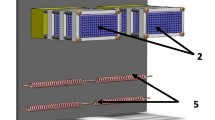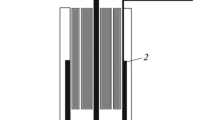Abstract
We have measured the E.coli bactericidal efficiency of DC and AC point-to-plane coronas in air and in argon in the corona modes positive glow, positive streamer, negative Trichel pulse and negative glow. Negative Trichel pulse and positive streamer coronas are the most efficient for production of bactericidal agents in air. Less than 5 minute exposure to the products from 30 μA of these coronas will sterilize the E.coli covered agar surfaces in a 3l volume to a survival ratio of 10−5. Positive glow coronas are two orders of magnitude less efficient. 50 Hz AC coronas seem to mainly work during the negative half cycles. The bactericidal agent(s) produced by the coronas have not all been identified, but ozone O3 with concentration 35–40 ppm is probably the most important one. We show that charged particles and photons can play only a minor role, so the agent(s) must be neutral particles. The main part of them must have a lifetime in the vessel of more than 3 minutes. The much smaller, and volume/distance dependent, efficiency of coronas in humid argon indicates that metastable neutrals or radicals from H2O can play only a minor role. A preliminary test showed negligible effects of the corona treatment on the spores of Bacillus subtilis.
Similar content being viewed by others
References
R. S. Sigmond and M. Goldman: in Electrical Breakdown and Discharges in Gases (Eds. E. E. Kunhaidt and L. H. Luessen), NATO ASI series B, Physics, Vol. 89B, Plenum Press, New York, 1983, p. 1.
A. Goldman and J. Amouroux: in Electrical Breakdown and Discharges in Gases (Eds. E. E. Kunhardt and L. H. Luessen), NATO ASI series B, Physics, Vol. 89B, Plenum Press, New York, 1983, p. 346.
A. M. Ostapenkov, Yu. V. Kaptereva, N. S. Merinov, and V. L. Lavrova: Electrochem. in Industrial Processing and Biology 1 (1979) 65.
M. K. Bologa et al.: Elektronnaya Obrabotka Materialov 2 (1982) 62.
Wu Yan, Wang Xilu, and Xia Bin: J. Electrostatics 28 (1992) 1.
S. A. Hoenig, G. T. Sill, L. M. Kelley, and K. J. Garvey: J. Air Pollution Control Assoc. 30 (1980) 277.
S. Masuda, S. Hosokawa, X-L Tu, N. TsuTsumi, T. Ohtani, T. Tsukahara, and N. Matsuda: IEEE Trans. Ind. Appl. 29 (1993) 774.
R. S. Sigmond and I. H. Lagstad: J. High Temp. Chem. Process. 2 (1993) 221.
R. S. Sigmond: in Proc. 4th Int. Symp. on High Pressure Low Temp. Plasma Chem. (HAKONE IV), Comenius University, Bratislava (Slovakia), 1993, pp. xv-xx.
Author information
Authors and Affiliations
Rights and permissions
About this article
Cite this article
Sigmond, R.S., Kurdelova, B. & Kurdel, M. Action of corona discharges on bacteria and spores. Czechoslovak Journal of Physics 49, 405–420 (1999). https://doi.org/10.1023/A:1022861403580
Issue Date:
DOI: https://doi.org/10.1023/A:1022861403580




